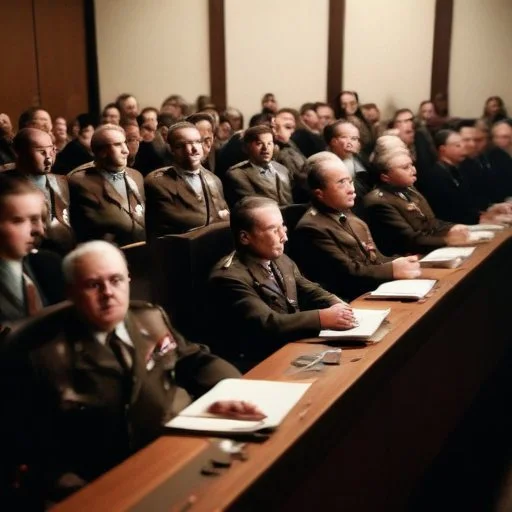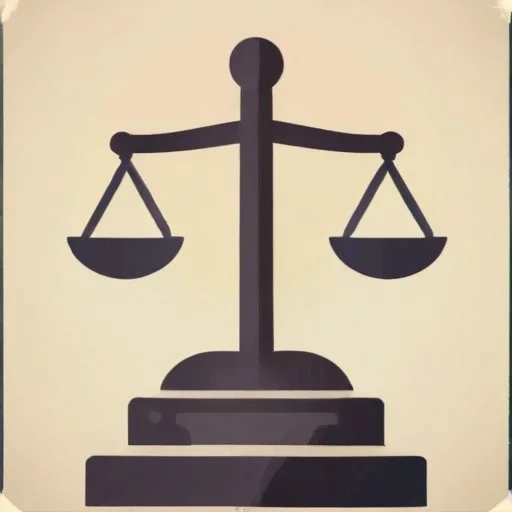In the aftermath of World War II, the world was left reeling from the unprecedented scale of human suffering and destruction. In response, the Allied powers came together to hold accountable those responsible for the atrocities committed by the Nazi regime, culminating in the Nuremberg Trials, a series of trials that would shape the course of international law and justice for generations to come.
In November 1945, the trials against 24 top Nazi officials began at the Palace of Justice in Nuremberg, Germany. The trials marked a significant departure from traditional notions of national sovereignty, as the Allied powers, led by the United States, Great Britain, France, and the Soviet Union, worked together to bring to justice those responsible for war crimes, crimes against humanity, and conspiracy to commit aggression.
Led by prosecutors Robert Jackson and Hartley Shawcross, the prosecution presented a mountain of evidence, including films, documents, and eyewitness testimony, to build a case against the defendants. The prosecution's strategy was twofold: to prove the defendants' guilt beyond a reasonable doubt and to demonstrate the Nazi regime's systematic and deliberate perpetration of atrocities.
The 24 defendants were a who's who of the Nazi high command, including Hermann Göring, Rudolf Hess, and Joachim von Ribbentrop. These men, once the masters of the Nazi war machine, now sat in the dock, their faces etched with defiance, anxiety, and, for some, a hint of remorse.
Over the course of 11 months, the trial unfolded like a macabre drama, with the prosecution presenting evidence of the Nazi regime's most heinous crimes, including the systematic murder of six million Jews, the forced labor of millions of civilians, and the deliberate targeting of civilians in bombing raids.
One of the most damning pieces of evidence presented was the film footage of concentration camps, including scenes of emaciated prisoners, mass graves, and the ghastly conditions of the camps. The testimony of survivors, including those who had endured the horrors of Auschwitz, Treblinka, and Dachau, added a human face to the statistics, conveying the unimaginable suffering and loss of life.
The defense, led by Friedrich Bergmann, argued that the Tribunal lacked jurisdiction, that the crimes were committed during wartime, and that the defendants were simply following orders. However, these arguments were met with skepticism by the judges, who rejected the notion that obedience to orders could absolve individuals of their responsibility for war crimes.
On October 1, 1946, the Tribunal delivered its verdict: 12 defendants were sentenced to death, 7 to imprisonment ranging from 10 years to life, and 3 were acquitted. The verdict sent a powerful message: that those who commit atrocities on a massive scale will be held accountable, regardless of their rank or position.
The Nuremberg Trials set a new standard for international justice, establishing the principle of individual responsibility for war crimes and crimes against humanity. The trials also paved the way for the development of international criminal law, influencing the creation of the International Criminal Court and inspiring future efforts to hold accountable those responsible for human rights abuses.
The Nuremberg Trials served as a beacon of hope in the aftermath of World War II, demonstrating that even in the darkest of times, the pursuit of justice and accountability can prevail. As Robert Jackson, the chief prosecutor, proclaimed, "The wrongs which we seek to condemn and punish have been so calculated, so malignant, and so devastating, that civilization cannot tolerate their being ignored, because it cannot survive their being repeated."
The Nuremberg Trials will forever be remembered as a triumph of justice over tyranny, a testament to the power of the human spirit to confront the darkest aspects of humanity and to strive for a more just and peaceful world.
The Nuremberg Trials were not the first attempt to hold individuals accountable for war crimes. The Hague Conventions of 1899 and 1907 established the principles of international humanitarian law, and the Treaty of Versailles after World War I included provisions for punishing those responsible for war crimes. However, the Nuremberg Trials marked a significant departure from these earlier efforts by prosecuting not only military officers but also high-ranking government officials and politicians.
The trials also drew on the experience of the International Military Tribunal for the Far East, which was established in 1946 to prosecute Japanese officials for war crimes committed during World War II. The Nuremberg Trials, however, were unique in their scope and scale, prosecuted 24 top Nazi officials and establishing the principle of individual responsibility for war crimes and crimes against humanity.
The trials were also significant because they took place in the country where the atrocities were committed, with the Palace of Justice in Nuremberg serving as the venue. This was seen as a symbol of the Allies' commitment to justice and accountability, and it allowed German citizens to witness the trials and confront the atrocities committed by their leaders.

Rudolf Hess, one of the defendants at the Nuremberg Trials, was a complex figure who played a significant role in the Nazi regime. Born in 1894, Hess was a decorated war hero in World War I and joined the Nazi Party in 1920. He quickly rose through the ranks, becoming Hitler's deputy and one of his closest confidants.
Hess was known for his fanatical devotion to Hitler and his strong anti-Semitic views. He was also instrumental in the development of the Nazi Party's ideology, and his writings on the subject were widely read and influential.
Despite his significant role in the Nazi regime, Hess's behavior during the trials was erratic and bizarre. He claimed to have amnesia and pretended not to recognize his fellow defendants, leading to speculation about his mental health.
The Nuremberg Trials had a profound impact on popular culture, inspiring numerous films, books, and plays. The trials were widely covered in the media, with reporters from around the world flocking to Nuremberg to cover the proceedings.
The trials also inspired a new genre of literature, including novels and plays that explored the themes of war, justice, and morality. One of the most famous examples is the play Judgment at Nuremberg, written by Abby Mann and starring Spencer Tracy and Marlene Dietrich.
The trials also had an impact on the development of international law, influencing the creation of the Geneva Conventions and the establishment of the International Criminal Court.

The Nuremberg Trials made extensive use of documents and artifacts as evidence, including the Nazi Party's own records and propaganda materials. One of the most significant pieces of evidence was the "Yellow Folder," a collection of documents detailing the Nazi Party's plans for aggression and genocide.
Other key pieces of evidence included films and photographs of concentration camps, as well as documents related to the Nazi Party's economic policies and military operations.
The use of documents and artifacts as evidence was a key innovation of the Nuremberg Trials, allowing prosecutors to build a compelling case against the defendants and establishing a new standard for international criminal law.
The Nuremberg Trials took place in a complex and rapidly changing geopolitical landscape. The Allied victory in World War II had created a power vacuum, with the Soviet Union and the United States emerging as superpowers.
The trials were also influenced by the emerging Cold War, with the Soviet Union and the United States competing for influence and seeking to promote their own ideologies.
Despite these challenges, the Nuremberg Trials marked an important moment of cooperation between the Allied powers, demonstrating their commitment to justice and accountability in the face of atrocities.